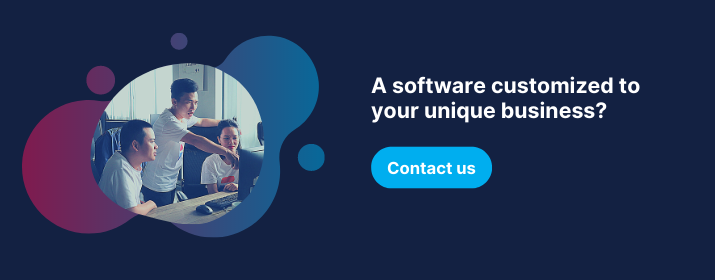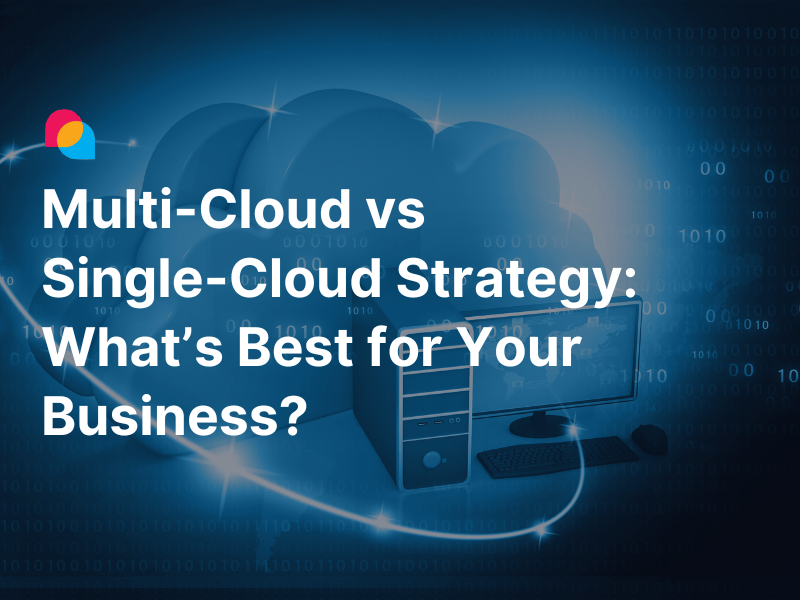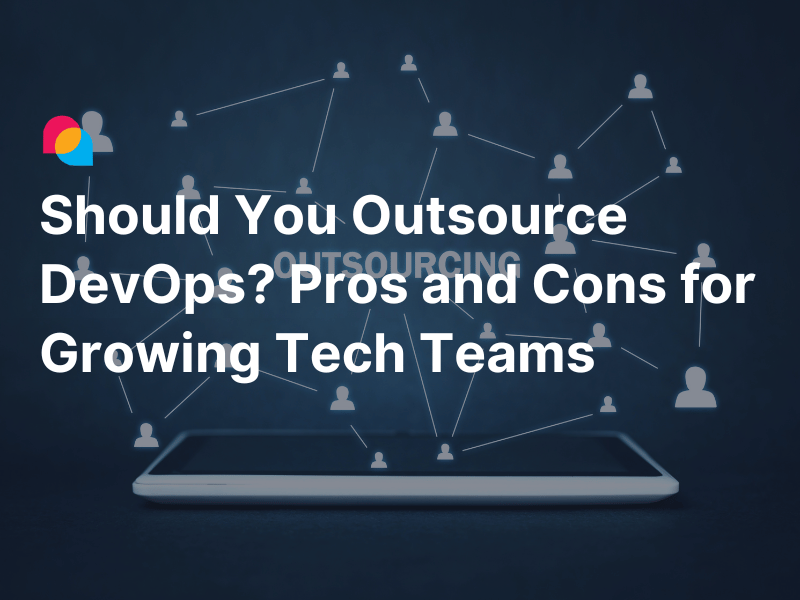For those businesses who have taken the initiative to outsource their product development, selecting the right engagement model is one of the critical steps before beginning to collaborate with a software vendor. It means that they should take into account the model that fits their business requirements, balance their budget, and leverage efficiency. There are three popular pricing engagement models in software development outsourcing, including Fixed Price, Time and Materials, and Dedicated Team.
In this article, we will go through all three engagement models that deliver maximum value for outsourced projects. We also provide you with common use cases and share how we support our clients to assess the best model suited for their needs.
Fixed Price Model
The Fixed Price development process is built based on crystal clear project details that the client provides. All payments within this engagement model are made on pre-defined milestones.
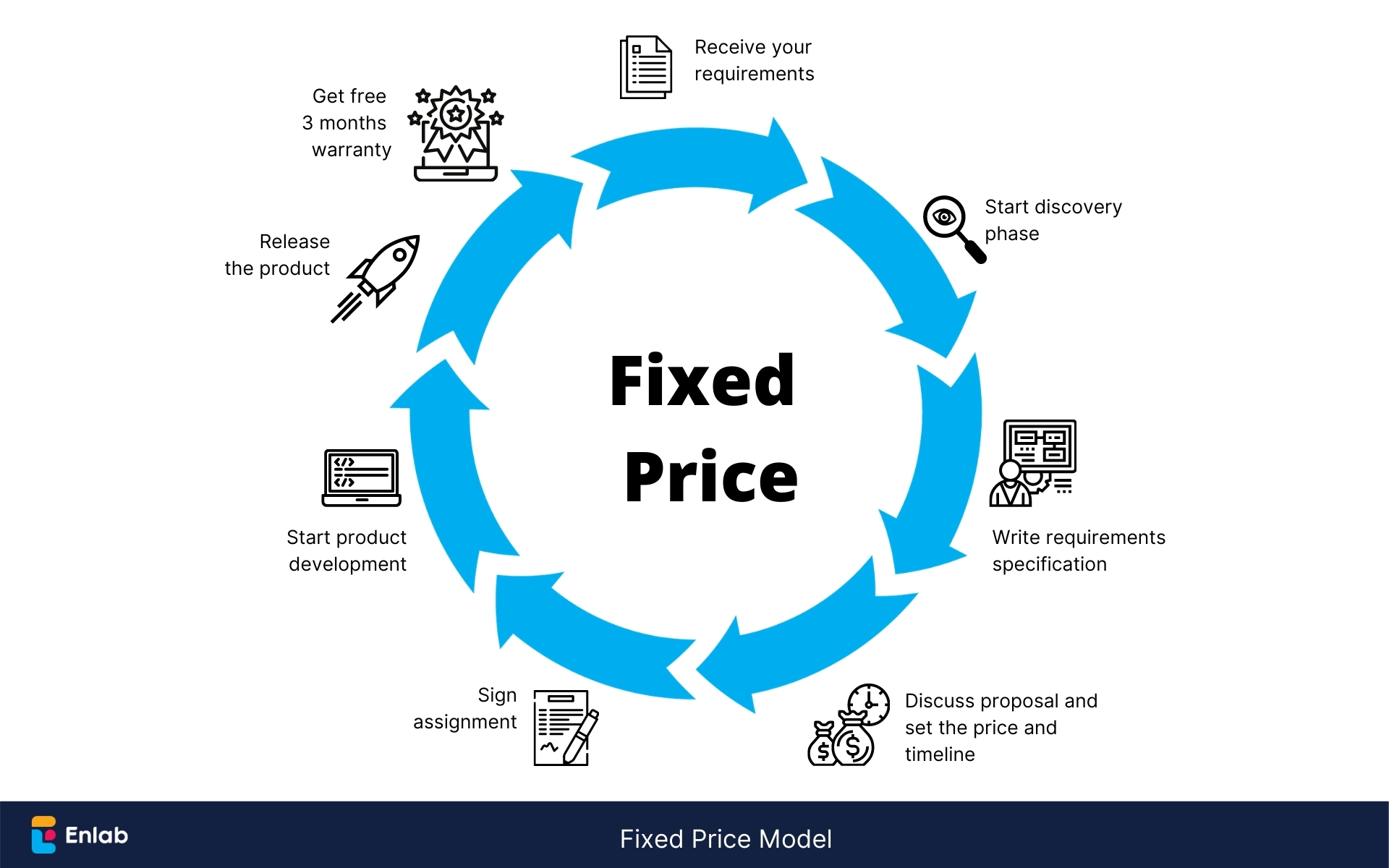
When to use this model?
- All product requirements are predefined clearly in terms of UI/UX design and product specification before the development phase.
- Technical documentation is adequately planned and available.
- The deadline and budget are fixed.
| Read also: How to write a practical “Agile” software product specification for startups |
Pros of the Fixed Price model
- Low financial risk
After the project cost is estimated in the billing contract, it’s easier to keep everything under control and know exactly how much you will pay based on agreed milestones and deliverables. The partners cannot overcharge you without prior notice. - Expected result
When you select the full-fledged Fixed Price model services, the detailed requirements are negotiated with the software company early. Thus, the partner will provide you with the working software that fits your needs and technical specifications. - Easy management
As all the project features are well-documented in advance, your project will proceed according to the direction you’ve set for it. Business owners can follow the product roadmap and manage the quality of the delivered work from constant reports.
Cons of the Fixed Price model
- Long planning phase
A Fixed Price contract requires diligent preparation and planning, either from the client or from the software company. Your partner needs to plan features in thorough detail, and this can take weeks to estimate accurately. - Inflexible process
There is no room for adjusting or adding features after signing the contract. When the market needs changes or a new feature is added, you cannot change the project's scope without negotiating with the partner. This can result in severe delivery delays and cost blowouts.
Time and Materials Model
Time and Materials is a billing contract based on the person-hours of resources used. This model is flexible to clients changing needs for schedule and budget. Business owners can make changes to the product, shuffle features, and involve end clients to get the perfect product. A software vendor issues monthly invoices accompanied by reports to give you an integrated insight into the work completed.

When to use this model?
- Project specifications and product requirements are constantly evolving and changing.
- Long-term projects are set up with dynamic work scope, undefined deadlines, and transparent and agile project execution.
- Clients want to give constant feedback to the development team based on market changes and customer demands.
Pros of the Time and Materials model
- High flexibility to change requirements
The work process in the Time and Materials method is open for changes and adjustments. It means that the client can change the project scope, requirements, or team size throughout the project to meet their business goals. - Fast response to market changes
With Time and Materials, clients can be responsive to market changes. The continuous iterations and user testing help create a product that fits market demands as possible. - Better control over the project
When you are involved with the project, you can get constant reports and the latest updates from your development team. It enables you to provide feedback during the software development process, re-arrange users' stories, clear up misunderstandings and adjust requirements after every iteration. Software companies often use project collaboration tools like Azure Boards, Jira, Trello, or even their own project management tools to facilitate smooth collaboration between the development team and the clients.
Cons of the Time and Materials model
- Lower control over the budget
Since the requirements and scope of the project remain undefined in detail, sometimes the final cost can go beyond the expected budget. Estimating the budget in advance is impossible, as it may change in the process of work. The best thing your business can do here is to have an in-house experienced technical specialist or a strong project manager or Scrum master to track project performance tightly and avoid costly project delays. - Increased management efforts
The Time and Materials model requires full-fledged involvement from a client, which requires time and effort from your side. It means that you need to allocate enough resources to collaborate with the vendor and provide prompt feedback to keep a steady development pace.
Dedicated Team Model
The Dedicated Team approach is a type of billing contract where you hire an offshore team (developers, designers, QA engineers, PMs, and others) that integrates into existing processes of your IT department without the hustle of recruitment and management. Here, you will pay the service provider a fixed monthly fee for each resource defined by the contract agreement.
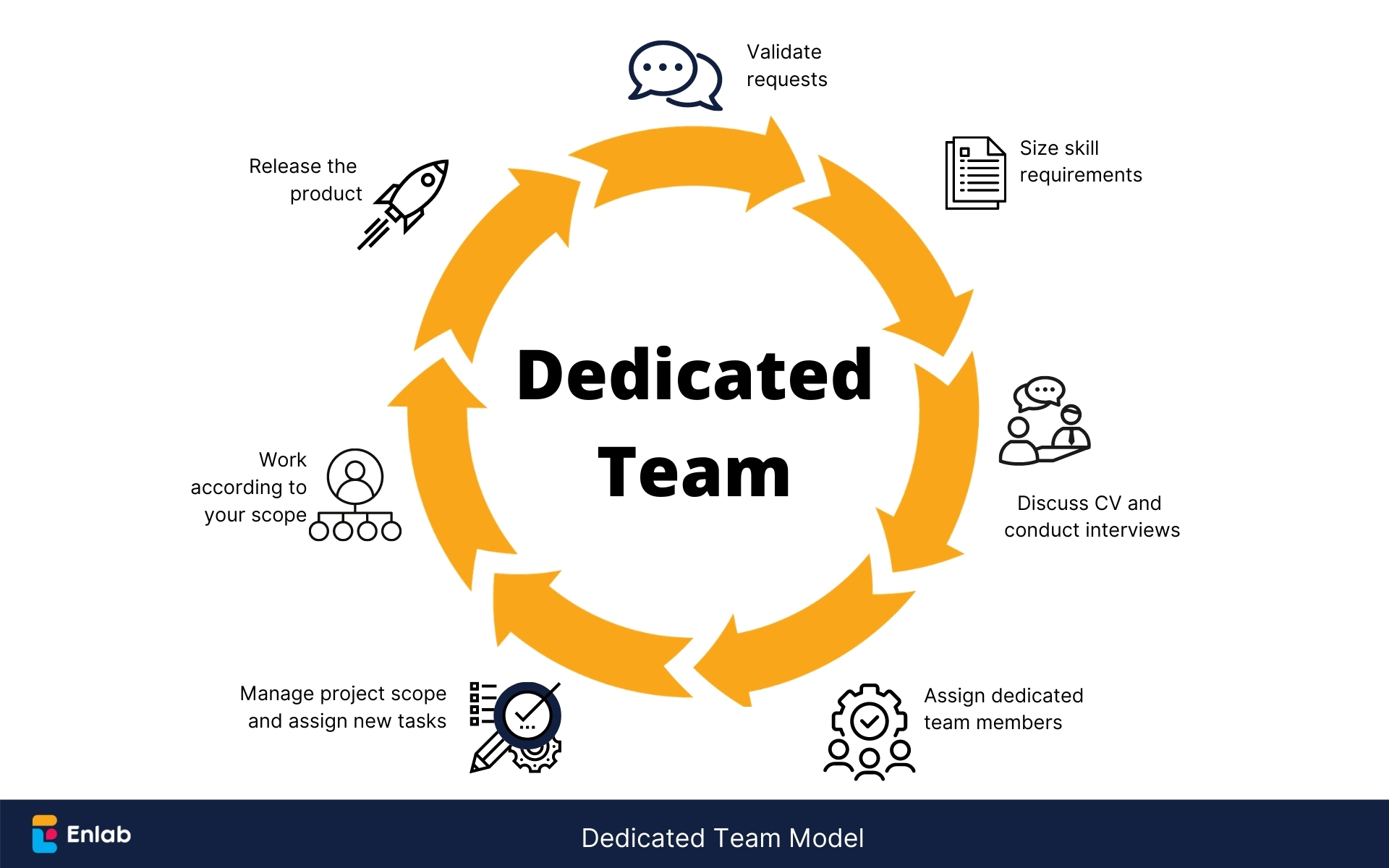
When to use this model?
- You want to broaden your development team but lack the resources to build an in-house team.
- Large or long-term projects are implemented with flexibility in objectives, scope, and skills needed.
- The project idea is well thought out and defined, all project requirements are available, and the development is about to start.
- Your experienced in-house specialists directly manage the software development process.
Pros of the Dedicated Team model
- Professional developers with key skills
Due to shortages in the domestic talent pool in the US, Australia, and Western Europe, hiring offshore software developers allows businesses to fill the gap in their teams without sacrificing the quality of products. Companies can get all the necessary competencies and skills offsite as well as achieve a highly efficient workflow.
You can assess overseas software developers who are truly dedicated and have in-depth experience provided by hundreds of software companies worldwide. Especially countries with rapidly developing technology sectors, like Poland, Ukraine, Bangladesh, the Philippines, and Vietnam, offer great opportunities for Western businesses moving into a post-COVID recovery phase.
| Read also: Why Vietnam to Outsource Software Development? |
- Significant efficiency in time and costs
In the USA, a company might spend several weeks or months searching and selecting the best full-stack programmers. The main reason comes from the high competitiveness among businesses and tech giants. Companies like Microsoft, Facebook, and Google always precede others in hunting for the best IT staff. Besides, software engineers in the US domestic market are both in high demand and short supply, commanding a premium rate. You can take advantage of offshore outsourcing in Asia or nearshore outsourcing in Eastern Europe to access resources at an equivalent standard of skills and expertise. The hourly rate here is probably $50-$55 per hour instead of costing $100 per hour in the US. Thus, hiring offshore developers allows you to save a lot of time and money, reducing overheads such as rent, office equipment, and staff benefits. - Increased flexibility and scalability
A great benefit of getting with the Dedicated Team is flexibility. Development teams are flexible to change and improve the scope, requirements, and other priorities. Besides, this model allows you to ramp up your team in record time, depending on your project’s needs to fill the gap. Also, you can request part-time coworkers to do a specific task in technology outside your tech stack. - Productive collaborative control
When you have complete control over the project progress and budget scheme, this model requires your full-time engagement. If you choose the right talent, you will be able to easily monitor work progress by yourself or with the help of a project manager.
Cons of the Dedicated Team model
- Poor efficiency for short tasks
Some companies believe that the Dedicated Team model is not a good fit for short-term projects. In this case, it causes possible time-consuming communication with new team members. This cooperation is much better for a long partnership with unclear final dates and changing requirements. - Longer preparations
Finding perfect software engineers and other team members can take a lot of time in communication, negotiation, and software development. It would help if you considered expenses and potential ROI to understand whether it's the right choice or not. This requires vast managerial experience and a technology background.
| Read also: How to avoid the top pitfalls in offshore software development. |
Comparison chart for three engagement models
We compared three models in outsourcing according to the following parameters.
|
|
Fixed Price | Time and Material | Dedicated Team |
|
Size of project
|
Small to medium | Medium to large | Large |
|
Requirements
|
Defined | Evolving | Evolving |
|
Duration
|
Short and average | Average to long | Long |
|
Time frames
|
Predefined | Incremental or intermittent | Incremental or intermittent |
|
Scope of work
|
Medium | Small to medium | Large |
|
Budget
|
Fixed | Moderately flexible | Highly flexible |
|
Pricing
|
Fixed-price for a project | Fixed every month | Fixed for each team member per month |
|
Technology stack
|
Pre-planned | Situational | Flexible |
Common use cases
Below, we provide you with some common use cases to help you understand three main outsourcing engagement models and how to apply them to specific situations.
Industries
In terms of industries, the Fixed Price model will be appropriate and work effectively in medical, governmental, banking, and military projects. These projects' quality bars are obliged to be so high, or the business cost of change is so dramatic (e,g., additional licensing procedures are required). It means that all the requirements are strictly defined, clarified, documented, approved, and officially frozen by business and development teams.
On the other hand, the Dedicated Team Time and Materials are great models that work well in most projects in the field of fintech, blockchain, marketplace, and eCommerce, to name a few, where the business landscapes are constantly evolving. You will be able to adapt in real time to any changes in the market.
Business types
If you own a startup, before spending a huge investment, you need to build a small and well-defined MVP first, and this is where the Fixed Price model comes into play. After successfully validating the product ideas, having the early-adopter customers, and understanding the inside out of the outsource team, Time and Materials is a great choice for the next phases.
When a startup looks for the right technical talents in a short time and can not afford a hefty upfront for project development, hiring the Dedicated Team of development experts is a surefire way. It helps create a high-quality product faster, evaluate the deliverables efficiently, and adjust requirements or processes as needed.
For SMBs, it is a good idea to apply Fixed Price contracts for either pilot projects or long-term partnerships with a strictly limited scope of responsibilities. Before embarking on any new business process, pilot projects help you assess the team's skill, predict the impact on your ultimate project as well as ensure the development team you are working with can meet your standards. This type of billing contract will also be the most suitable for companies to develop small prototype-like, temporary solutions or apps for internal usage. These products' needs are not dependent on the market.
For experienced companies and established enterprises that used to outsource many times before, you could outsource product engineering to multiple software vendors with detailed and feasible estimations at once. Each provider creates a small part of the comprehensive solution. Each fragment of the project is well documented beforehand, so all the contractors should develop the part of a project in time and within the budget. The Time and Materials suit and gives better control over the budget as the client is billed monthly, which leverages short-term ad hoc planning.
For digital agencies that need an addition to their existing team – you can benefit from a dedicated team of developers and experts. The Dedicated Team model also suits large-scope projects with evolving requirements, such as legacy infrastructure modernization, AI implementation, and machine learning algorithms for big data analytics or cloud consultancy related to IT infrastructure performance.
How Enlab supports our clients
At Enlab, we apply hybrid approaches according to their client's expectations and requirements in each development phase. Oftentimes, we start with a Fixed Price model for MVP and pilot projects. We move to Time and Materials and Dedicated Team for scale-up, enhancement, and maintenance phases.
When our clients choose the suitable model for their product, they will have total control, transparency, and flexibility over the delivery and the budget during the whole development process.
Here is a case study of our startup client from the US and Canada. The client wanted to develop a cloud-based Marketing Automation platform. Initially, the business owner opted for the Fixed Price model to build a small MVP implementation plan. We budgeted out the features according to need, difficulty, and client desire. This model is a good first step when creating a reliable business partnership between the client and us. After three months, we successfully launched the web app, which helped the client get over early adopters in just a couple of weeks. We have gained the trust of our clients and continuously work with them to move the project forward based on the Time and Material contract.
Another case study is about a Digital platform for blue-collar worker recruitment in the Marketplace domain. We’ve supported a young and enthusiastic startup in Australia to build an online platform for recruitment. Before the development phase, we consulted the client about the Fixed Price contract to build an MVP. The MVP has helped our client successfully acquire early adopters and get investments. We are continuing the Time and Materials collaboration to build new features.
Final thoughts
It is not easy to choose the most suitable outsourcing engagement model when engaging with a software engineering provider. Your choice conclusively depends on your time, budget, and the type of project you are looking to develop. Therefore, you need to consult with your outsourcing provider to balance the risks and rewards for both parties. They will use their past experience and expertise to create a contract perfectly aligned with your project.
We hope this article brings you a better idea of the popular pricing engagement models in software solution development and assists you in making better-informed decisions. Clearly communicating your expectations and choosing a suitable pricing model can go a long way to achieving success.
References
- Andy Hilliard, Understanding 4 Different Outsourcing Models, www.accelerance.com, 2016.
- Top 32 Benefits of the dedicated team model, www.diceus.com, 2018.
- 10 use cases when a dedicated team model works for you, www.diceus.com, 2019.
- Fixed-price contract, www.wikipedia.org
